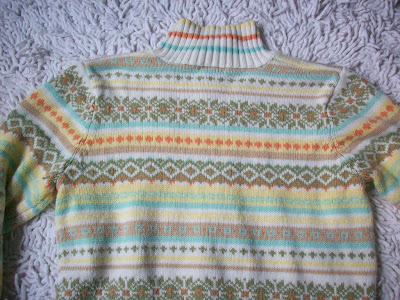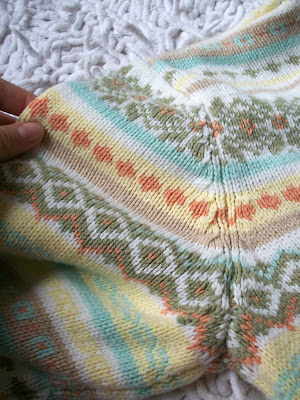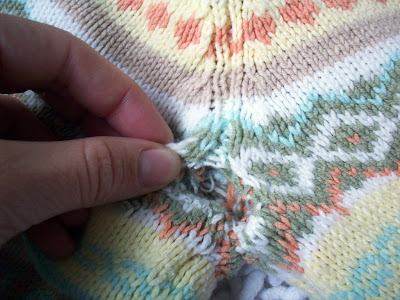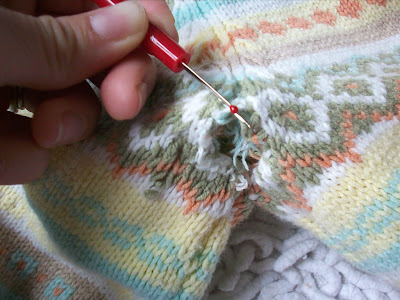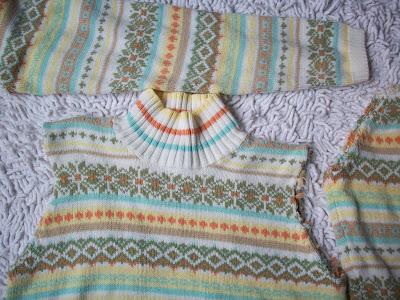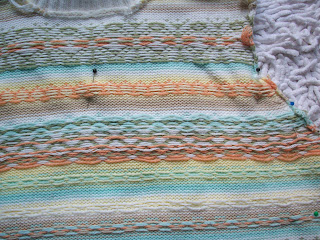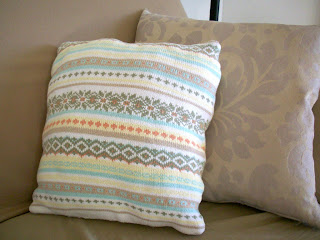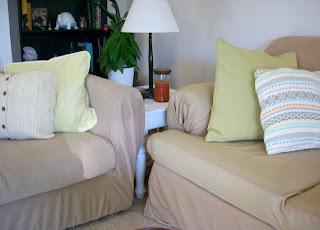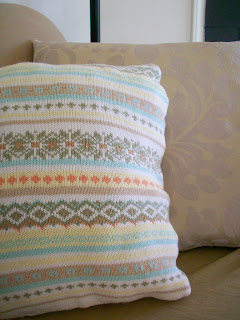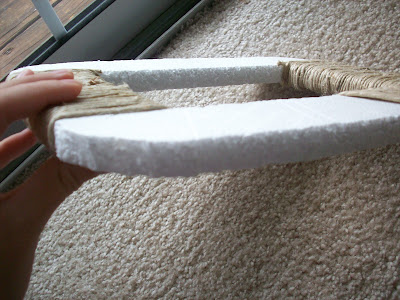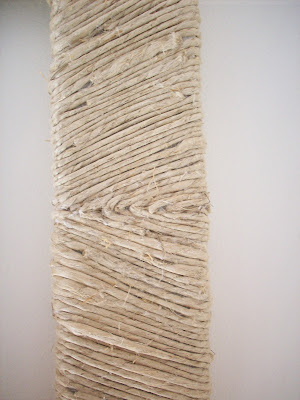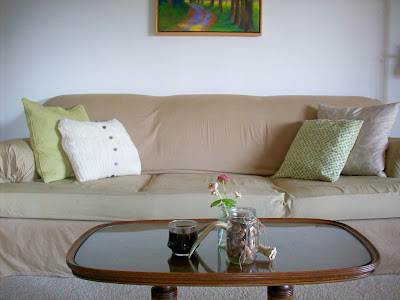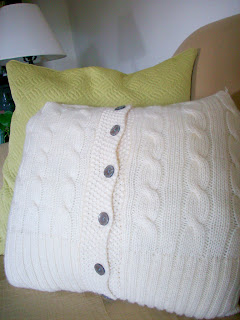After showing the first
sweater pillow I created, I got several emails asking for a tutorial. Not that I needed a reason to make a second pillow...these pillows are soft and cuddly and perfect for the cooling weather.
Allow me to introduce you to my Goodwill sweater. This colorful guy was tired of seeing the back of closets - with his busy patterns and unique color scheme he had little hope of making it out of that closet. Until I found him. I recognized the greens and blues and yellows and creams that are right at home in my living room color scheme. Better yet I recognized the tans and oranges as a hint of fall that I've been looking for. So that, my friends, is how this sweater made it home with me.
As with all fabric I bring home from Goodwill, I washed him in hot water. Washing and drying the sweater allows for some felting to occur. I prefer the slightly felted look - it ensures the sweater is close-knit and won't gape and show the stuffing or pillow insert. It also gives me peace of mind that the yarn won't unravel.
After he was dry (I put him in the dryer for a little bit and then allowed him to finish air drying), I took off the arms. I did this because the size of my pillow was going to force me to go slightly above the body of the sweater and past the arm area.
The arms are sewed on with a long piece of yarn. It's easy to determine which yarn once you
squint put on your glasses and get a good look. Using a seam ripper, I worked my way around both arm openings.
Don't worry if you lose track of which yarn is the yarn you are ripping. I just skipped that section and started up again when I found a spot that was obvious. Once you are ready to go back and work on the skipped section, it's easy to rediscover the yarn used to sew both pieces together. You can see how I skipped a small section in the photo below.
With the arms off, you're left with a lovely sweater vest that you may just decide to keep as it. Kidding! But ripping out the seams, you ensure that the yarns are not going to ravel because you are keeping the knitting and its hems intact at this point.
Now it's time to determine the size of your pillow. I wanted a 15x15 pillow which unfortunately meant that I would have to cut off some of the sides and go up into the arm area. If your sweater is larger than mine, you could just close up the bottom and the top of the sweater and call it a day!
I used a couple pins to keep the sweater together and mark the path I was sewing along. I then changed my stitch length to the smallest length possible. I did this to ensure that I caught every single piece of yarn so that unraveling wouldn't be a problem.
If you look very closely at the photo below, you'll see the white stitching running horizontally across the sweater. I chose to put in two lengths of stitches running parallel to each other to provide extra protection against unraveling. Once that is done, cut your sweater.
Once you've completed your pillow, fluff and enjoy!
You can see my pillow needs some much needed cuddling to get the stuffing in all the right places.
My living room is slowly becoming ready for the colder months. I just need to incorporate some darker, more saturated colors (I'm thinking a hunter green and/or navy blue to darken up the color pallet) and a
knitted throw.
Last night this little guy was my go-to-pillow while watching television. He makes a much better pillow than sweater, don't you think?















